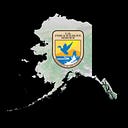Stewardship & Action
How to Love Your Ocean
Tackling Marine Debris At Home and Afar
Battered by the wind, lonely and remote, Tugidak Island faces into the brunt of North Pacific Ocean currents in the Gulf of Alaska. Though currently uninhabited, it catches and holds the evidence of humans: lines and nets from fishing boats, water bottles, food packaging, and tiny fragments of flotsam. Tugidak shares the fate of many Alaskan beaches along more than 46,000 miles of coastline (more than the entire continental United States combined). Trash, mostly plastic, arrives from around the world and washes ashore above the tideline to stay, perhaps for hundreds of years.



Kyla Villaroya was a high school student in Kodiak when she first made the trip to Tugidak. As a Youth Conservation Crew member for the Kodiak National Wildlife Refuge, her crew joined a volunteer effort led by non-profit Island Trails Network to assist with a multi-year marine debris cleanup project.

Villaroya and crew spent five days on the island, and in that short amount of time they collected about 5 tons of marine debris. She remembers finding everything from fishing nets to styrofoam containers to unidentifiable plastic pieces:
“Most frustrating of all were the small debris that were chipped off from larger items. Not only were they pesky to pick up, but it left us worried that the other bits had already impacted wildlife and ecosystems.
By the end of the week, my crew and I left Tugidak feeling like we could never use plastic items or styrofoam ever again! It was such an impactful experience.”

Perhaps the largest single deposit of marine debris in the western Gulf of Alaska, the remote Tugidak cleanup involved many challenges, and also inspired those who joined the effort.
Kyla Villaroya has since participated in numerous beach cleanup projects closer to home. We asked her to share some tips on how we can all pitch in to tackle the problem of marine debris:
Kyla‘s Tips:
- Bring garbage bags in your beach tote or keep them in your car for whenever you make a beach trip. This will make a habit of doing a marine debris clean up every time you visit the coast.
- Peer pressure is good sometimes- make marine debris clean up a group activity! Have your friends/family help out, and set a goal for how much to collect. You can even make it a competition!
- One person’s trash is another’s treasure. Repurposing the debris helps keep it out of the landfill. Make the marine debris into a home improvement project or art- the world is your oyster.
And most important? Use less!
- Reduce the amount of disposable plastics/styrofoam/other one-use materials in your everyday life. The less materials we use, the less chance of it being discarded into our oceans. Marine debris is preventable, and it is up to all of us to change the future for our oceans, wildlife, beaches, and ourselves.



Read more:
Discover the Issue: Marine Debris
The Problem of Marine Debris in Alaska
Tugidak Island: Home to thousands of harbor seals and 43 tons of trash
Compiled by Lisa Hupp, Communications Coordinator for Alaska’s National Wildlife Refuges
In Alaska we are shared stewards of world renowned natural resources and our nation’s last true wild places. Our hope is that each generation has the opportunity to live with, live from, discover and enjoy the wildness of this awe-inspiring land and the people who love and depend on it.
